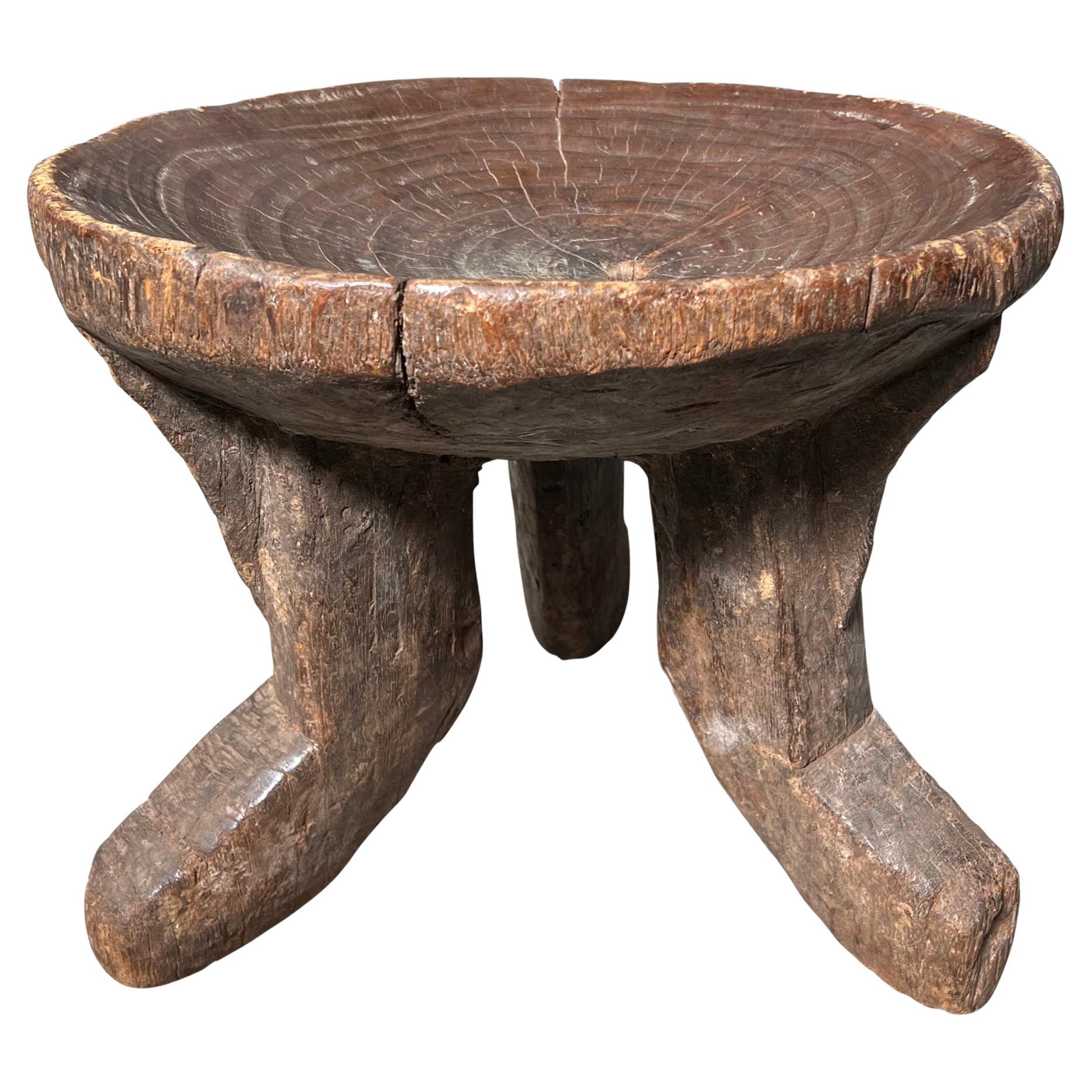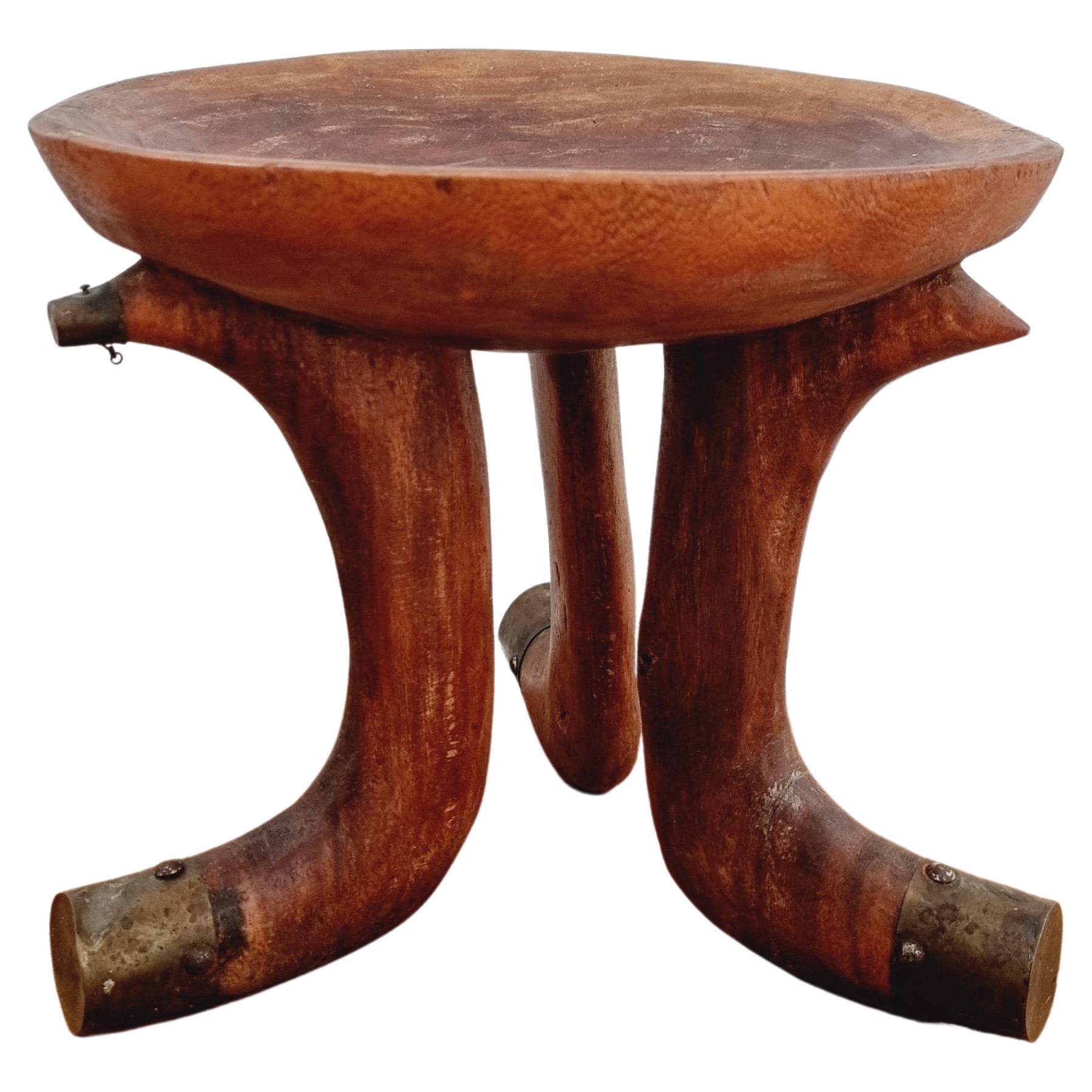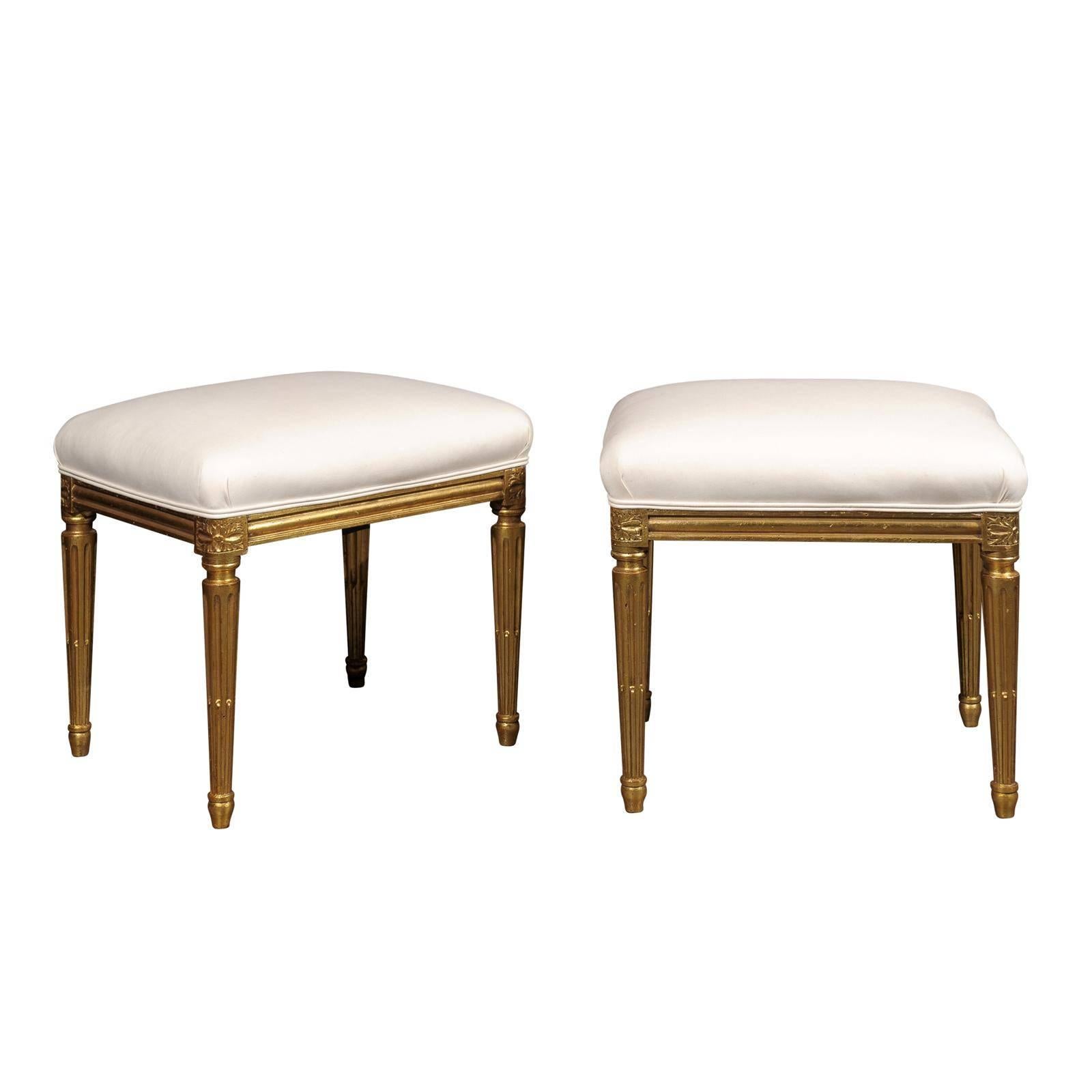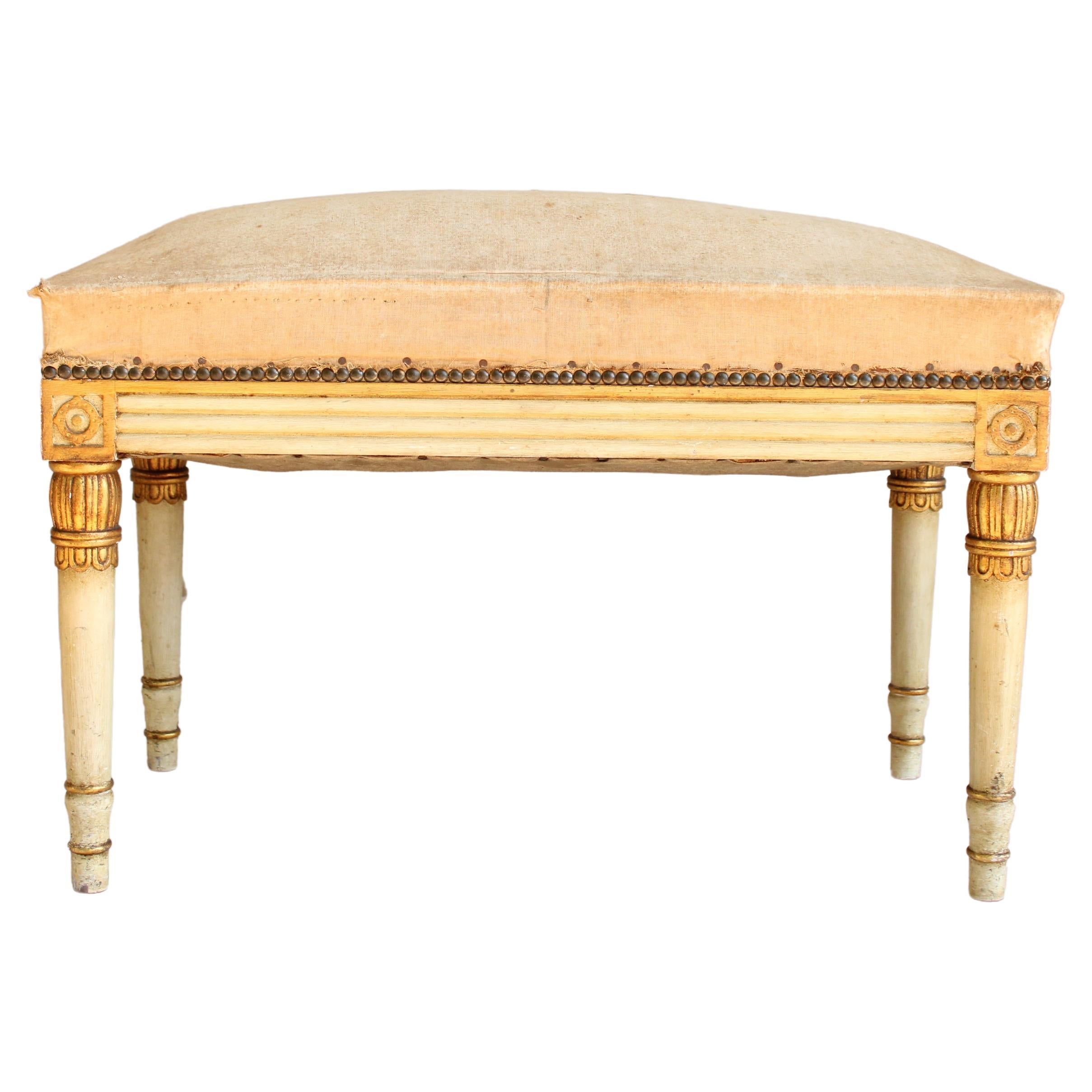Items Similar to Ethiopian-Style Stool with Scrolled Legs, Norway, First Half of the 20th Century
Want more images or videos?
Request additional images or videos from the seller
1 of 17
Ethiopian-Style Stool with Scrolled Legs, Norway, First Half of the 20th Century
About the Item
E?thiopian and other African-influenced furniture had been made in Europe from the 1850s, the most famous being Adolf Loos’s “Theban stool” designed around 1903 in the Egyptian revival style. Based on its visual qualities, this pair of hand carved Ethiopian-style stools could have inspired Loos’s design.
This original design also took a piece of English furniture as its inspiration, although Liberty's three-legged stool was itself based on an ancient Egyptian stool seen by Leonard Wyburd in the British Museum. Loos' version differed from this by virtue of its tighter proportions. Josef Frank developed yet another more elongated form around 1929. The body of these tripod stools are carved from a single tree trunk, which was a common technique in Africa during the 19th and early 20th century. The low seats have a deepening, uneven, organic seating surface and show the natural qualities of the wood. This creates a stunning, elemental aesthetic that praises both the material’s natural beauty and the craftsman’s work. Still, the eyes are immediately drawn to the curled, scrolling legs that support the seat. This shape is traditional for tribal stools from Ethiopia, especially for the ones created by the Jimma and Oromo people in the forest area of Western and Southern Ethiopia respectively. Traditionally, these stools were made of hardwood - similarly to Scandinavian pieces - and served a mostly functional purpose, such as for the tribe’s elderly who carried them around. This pair was most likely created in Norway inspired by the original African pieces.
These stools have a beautiful folk look to them with visible, raw craftsmanship and history. Using African and Asian tribal-inspired stools have become popular accent pieces in contemporary homes. This is because - like this pair - these pieces are all completely unique and carry a charm that is impossible to mass produce.
Condition:
In good vintage condition. Wear consistent with age and use. Some cracks in the wood.
Dimensions:
12 in W x 11.41 in D x 13.77 in H
30.5 cm W x 29 cm D x 35 cm H
Second stool
13.77 in W x 12.2 in D x 14.56 in H
35 cm W x 31 cm D x 37 cm H
Shipping:
These stools will be packaged and shipped with the greatest care and attention to make sure you will receive the items in gallery condition. Complimentary shipping within the Netherlands.
- Dimensions:Height: 14.57 in (37 cm)Width: 13.78 in (35 cm)Depth: 12.21 in (31 cm)
- Sold As:Set of 2
- Style:Brutalist (Of the Period)
- Materials and Techniques:
- Place of Origin:
- Period:
- Date of Manufacture:First Half of the 20th Century
- Condition:Wear consistent with age and use. Some cracks in the wood.
- Seller Location:Utrecht, NL
- Reference Number:Seller: 202212061stDibs: LU2947330881702
About the Seller
5.0
Recognized Seller
These prestigious sellers are industry leaders and represent the highest echelon for item quality and design.
Gold Seller
These expertly vetted sellers are highly rated and consistently exceed customer expectations.
1stDibs seller since 2017
372 sales on 1stDibs
Typical response time: 7 hours
Associations
20th Century Specialists
- ShippingRetrieving quote...Ships From: Utrecht, Netherlands
- Return PolicyA return for this item may be initiated within 7 days of delivery.
More From This SellerView All
- Woven Rattan Stool, Europe Early 20th CenturyLocated in Utrecht, NLIn the professional field of interior design, certain pieces and types of furniture hold a timeless allure, effortlessly weaving together functionality, aesthetic appeal, and a rich history. Among these treasures is the simple, way too often overlooked, but extremely versatile stool, This lovely piece from the early 20th century is entirely Crafted from the organic material rattan, and embodies a harmonious blend of natural beauty, craftsmanship, and functional elegance, making it a perfect accent piece for both modern and classic interior settings. Rattan, derived from the climbing palms native to tropical regions of Africa, Asia, and Australasia, boasts a unique combination of flexibility, durability, and lightweight properties. As such, its pliable nature allows skilled artisans to deftly manipulate and weave it into intricate patterns, resulting in furniture pieces like this stool that exude both sophistication and an artisan, rustic charm. Similarly to traditional wooden furniture, rattan possesses a warmth and tactile quality that invites touch and appreciation of its natural texture. The resurgence of stools in contemporary interior design can be attributed to several factors; Firstly, their compact size and versatility make them ideal for maximizing space in smaller living areas or apartments. Stools can easily be tucked away when not in use, serving as convenient additional seating when guests arrive or as a practical surface for holding books, plants, or decorative items. Moreover, their understated elegance, individuality, and timeless appeal complement a wide range of interior styles, from minimalist and Scandinavian to Bohemian and eclectic. At the heart of this rattan stool's charm lies its exquisite weaving patterns and impeccable quality. Each strand of rattan is skilfully interlaced to form intricate circular motifs and geometric designs, showcasing the craftsmanship and attention to detail of its maker. The weaving technique employed in crafting this stool results in a sturdy yet lightweight structure, capable of withstanding the test of time while retaining its graceful silhouette. The stool's slightly splayed, bent legs add a touch of visual interest and stability, while the metal caps on its feet provide both protection and a subtle hint of industrial flair. This thoughtful combination of materials and design elements enhances the stool's durability and aesthetic appeal, ensuring that it remains a cherished heirloom for generations to come. Versatile in its functionality, the rattan stool can serve as a humble pallet for showcasing curated collections or as an elegant flower pedestal, bringing a touch of natural beauty indoors. Its timeless allure and understated sophistication make it a beloved accent piece in modern interiors, where it serves as a testament to the enduring appeal of organic materials and masterful craftsmanship. In conclusion, the intricately woven rattan stool...Category
Early 20th Century European Mid-Century Modern Stools
MaterialsRattan
- Sculptural Ladder-Back Chairs, Europe first half of the 20th centuryLocated in Utrecht, NLOver the 20th century, European designers fused traditional crafting techniques and styles with modern materials, design, and industry. The ladder-back chair was one of the most popular chairs of its time. Today, classic ladder-back chairs and their more modern reiterations are desirable, collectible pieces thanks to their distinctive look, quality, and history. Since Gio Ponti’s “Fireside” chair...Category
20th Century European Modern Dining Room Chairs
MaterialsFabric, Wood
- Set of Upholstered Art Deco Armchairs, Europe First Half of 20th CenturyLocated in Utrecht, NLCharacterized by its bold geometric shapes, rich materials, and luxurious aesthetics, Art Deco transformed the way we perceive interior spaces. It was a testament to the fusion of fo...Category
Early 20th Century European Art Deco Armchairs
MaterialsFabric, Wood
- Traditional Norwegian Carved Kubbestol, Norway early 20th centuryLocated in Utrecht, NLIn Norway, cube chairs have been in use since the Middle Ages, and in the 18th and 19th centuries, cube chairs were mostly used in the farming communities in Eastern and Southern Nor...Category
Early 20th Century Norwegian Scandinavian Modern Chairs
MaterialsWood
- Butaque Colonial Chairs, Indonesia Second Half of the 20th CenturyLocated in Utrecht, NLThese chairs are aesthetically arresting and design-wise, a mixture of the iconic butaque chair and Indonesian colonial planter chairs. The butaque, a Colonial-era hybrid of Spanish ...Category
Late 20th Century Indonesian Mid-Century Modern Lounge Chairs
MaterialsLeather, Wood
- Mid-Century Wooden Stool with Split Seat, Europe Ca 1950sLocated in Utrecht, NLStools have been steadily increasing in popularity thanks to a number of reasons, the most obvious being their space-saving functionality. Stools can be used in any space to provide an easily moved alternative to more cumbersome furniture. However, thanks to their versatility, they can provide a lot of visual interest. European mid-century design is generally characterized by a minimal, clean approach that seeks to combine functionality with beauty. With its focus is on simple lines and light spaces, this stool is devoid of clutter. Standing on four straight legs, the sole decorative element is the split seat...Category
Vintage 1950s European Mid-Century Modern Stools
MaterialsWood
You May Also Like
- Early 20th Century Ethiopian 3-Legged StoolLocated in Chicago, ILA wonderfully sculptural early 20th century Ethiopian stool from the Gurage Peoples, carved of one piece of wood with the most wonderful texture, and with three curved legs supportin...Category
Early 20th Century Ethiopian Tribal Stools
MaterialsWood
- Tribal Stool with Brass Details, Southern Ethiopia, Early 20th CenturyLocated in Stockholm, SEThree legged tribal stool from Southern Ethiopia. Light reddish wood the legs are partly covered with brass. Early 1900s / first half of 20th century. Provenance: P. Strand Carl ...Category
Early 20th Century Ethiopian Tribal Stools
MaterialsBrass
- Pair of French Early 20th Century Upholstered Stools with Giltwood LegsLocated in Atlanta, GAA pair of French upholstered and gilded stools from the early 20th century. This elegant pair of French Louis XVI style stools from circa 1920 features a new muslin upholstery applie...Category
20th Century French Louis XVI Stools
MaterialsMuslin, Upholstery, Giltwood
- Small Stool Empire-Style from the 20th Century, PortugalLocated in Lisboa, PTThe Empire style emerged in France during the early XIX century under the leadership of Emperor Napoleon Bonaparte. It is characterized by its prominent straight lines and geometric ...Category
20th Century Portuguese Empire Stools
MaterialsWood
- 10 Round Rustic Vintage Bar Stools with Tree Logs Legs from the 20th CenturyLocated in Atlanta, GA10 vintage American barstools from the 20th century featuring a round swivel seat upholstered with black leatherette padding. Each piece rests on four high splayed legs made of thin tree logs...Category
Late 20th Century American Stools
MaterialsWood, Faux Leather
- Early 20th Century oak joint stool in the 17th Century styleLocated in Martlesham, GBEarly 20th Century oak joint stool in the 17th Century style, the moulded edge rectangular top with a decorative carved frieze below, raised on turned baluster supports united by str...Category
Vintage 1920s British Stools
MaterialsOak
Recently Viewed
View AllMore Ways To Browse
Antique Norway
Norwegian Antique Furniture
African Wood Stools
Vintage Antique Stool
Antique Vintage Stool
Vintage Stool Antique Furniture
Trunk With Legs
Ancient Egyptian Wood
19th Norwegian
Norway 19th Century
19th Century Norwegian
Ethiopian Design
Brutalist Wood Stool
Elderly Furniture
English Stool 19th Century
Antique Loo
Trunk On Legs
Trunk Stool





